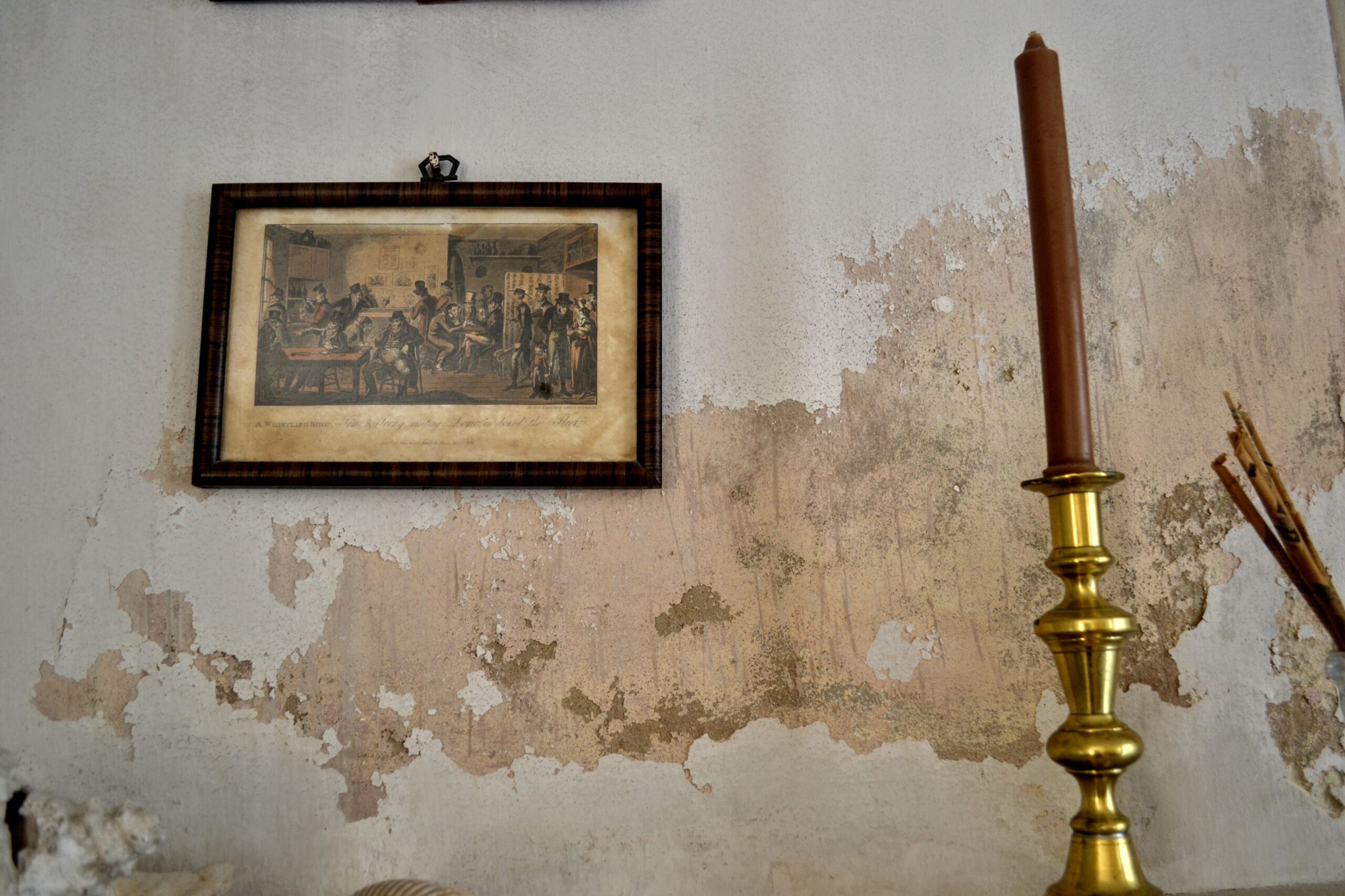
Historic Preservation & Restoration
What is a Historic House Museum?
Well, we are!
The Ximenez-Fatio House and the outlying buildings are the largest, oldest, and most valuable artifacts of this museum!
A Historic House Museum is one whose collections and programs are presented within a building that is historically significant. Many Historic House Museums teach visitors about everyday life within their houses and how they were affected by larger historical events. Historic House Museums usually have collections of period-appropriate furniture and objects.
There’s Lots of Old Buildings in St. Augustine, What Makes Our House So Special?
Our house was built in 1798 with completely different methods and materials. The two main materials are called Coquina and Tabby.
What is Coquina?
Coquina is a naturally occurring material made of hard-packed sand and shell fragment, which have been compressed underground for thousands of years. This concrete-like material was used to build many structures in St. Augustine — like the Castillo and the Ximenez-Fatio House. (A bare coquina wall can be seen on the 1st floor Archaeology Room.) Learn more about Coquina and Tabby here!
What is Tabby?
Tabby is a man-made cement composed of water, lime, sand, ash, and crushed oyster shells. It has been used in buildings all over the Lowcountry in the Southeastern United States. (A tabby floor can be found just at the base of the main staircase, in the First Floor Loggia.) Learn more about Coquina and Tabby here!
Preservation vs. Restoration
Preservation: Preserving a historic building means maintaining the existing historic materials within it.
Preservation at the Ximenez-Fatio House means maintaining the building in structure and appearance — even the elements that were added after the original coquina house was built in 1798. For instance, the wing that runs parallel to Cadiz Street was added in the mid-1800s. Even though these parts of the house are not original, we still preserve their structure and do not tear them down, as they are important to the interpretation of the property
Restoration: Restoring a historic building means removing elements of the building that were added after a certain time period.
Restoration on our property occurred in 1939 when the Ximenez-Fatio House was bought by the National Society of the Colonial Dames of America in the State of Florida. In order to turn the building into a Historic House Museum, modern elements like plumbing were removed from the house.
The Future of the Ximenez-Fatio House Museum
After 223 years of hurricanes, tourists, and families moving in and out of our building, along with general wear and tear, the upkeep of preservation and restoration and overall maintenance is an ongoing feat. Recently, we have begun a historical structure review with Joseph Opperman, of JKOA Architects of Winston-Salem, North Carolina. Mr. Opperman and his associates have inspected the structures on our property from top to bottom and are in the process of creating an updated historical structure report. This review and report will guide us in our preservation and restoration efforts over the next 20 years. Furthermore, Coenraad Van Rensberg of Latitudes of Palatka, Florida, has begun the tedious process of removal of mold from the ground level of the main house. While we are in the process of some big projects, there are many small projects day to day which are just as important. Cleaning and dusting, wood repairs, windowpane repairs, and shutter repairs are just some of the small, yet crucial, everyday tasks to complete.
The generosity of our guests and members of the NSCDA-FL through donations, tour admissions, and gift shop sales help us to complete these projects and keep our historic house museum standing for many generations to come. Donations from the public and our members are critical to our mission, but volunteer opportunities are always available. Interested in helping? Donate today here or sign up for our email list for future opportunities and campaigns!
